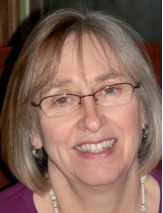I have made mention of this before, but now with a few months of experience and customer reviews behind me, here’s a complete announcement of my second book
Pep Talks for the Would-Be, Should-Be Artist
The book was born of many conversations I have had, often with buyers of the first book or with those who caught me in the act of sketching, in which people told me how they had once enjoyed making art but just couldn’t get started back into it. They didn’t have the time, they didn’t have the right material, they set standards they felt to be unachievable, and they faced many other impediments. It was for them that I wrote the book.
It's not an instructional book in the sense of “Step 1: Draw a circle. Step 2: Add arms and legs. Step 3: Color it in with green water colors.” Its messages are at a higher, more motivational level. Here’s Pep Talk #14; others are similar:
“Drawing is a form of looking carefully, seeing with new eyes, and recording your discoveries.
“If you learn to enjoy the process, the end product will take of itself. Go for quantity. Your work will improve with practice.”
Each of the 30 Pep Talks is accompanied by drawings that relate to that piece of encouragement, and more drawings then continue these themes through the book for a total of 80 images in 105 pages.
Within days of starting to offer the book at art/craft/farm markets, it became apparent that my target audience was wider than I had anticipated. Buyers were not limited to those needing to get back into art, but they included those just starting out, or those who knew somebody just starting out who needed an extra bit of encouragement to keep at it.
As with the first book, this was a family undertaking. Our daughter Karin, a graphic designer, built the book all the way from the concepts of layout through to the press-ready digital files. My husband Bruce was the indispensable guy in the middle, scanning the artwork, proofreading the text, and managing all the digital information. And the book was published by our friend Tom Holbrook of Piscataqua Press and RiverRun Bookstore in Portsmouth, New Hampshire, who also published the first book. We all learned a lot from that experience, which helped us slide right through this one. Big thanks to all.
And now, on with the blog!

We walked along the banks of the North Saskatchewan River on a Sunday afternoon. The green swirling waters begin in a glacier in the Canadian Rockies, divide the city of Edmonton, and eventually flow into Hudson Bay. And then go north to the Arctic Ocean.
As you can read in my notes, the mud is white on the far side of the river and a slippery black mud beneath our feet. And it was muddy, as it was raining.
I hope the gold prospector found many flakes on this day and maybe a nugget as well.
The mountain is called Mount Kearsarge, and it is in view from all parts of our village. The clouds and weather are often seen in conversation with the peak.
These pots of geraniums sit in a row on the porch of the town information booth on Main Street. They too seem to be having a conversation. Passing along the day's news. Asking if the other is thirsty.
As Autumn comes to a close, I present this wooden basket full of gourds in all their weird shapes and colors.
This collection of stuffed animals passes the day on our south facing window seat. The sun warms their backs all winter.
The one with the hat, Paddington, is a well traveled bear. Our daughter carried him all over Europe when the bear was young and so was she. Paddington was held high over her head in a castle in Germany. She was too short to catch the view from the tall windows, but he enjoyed it very much.









